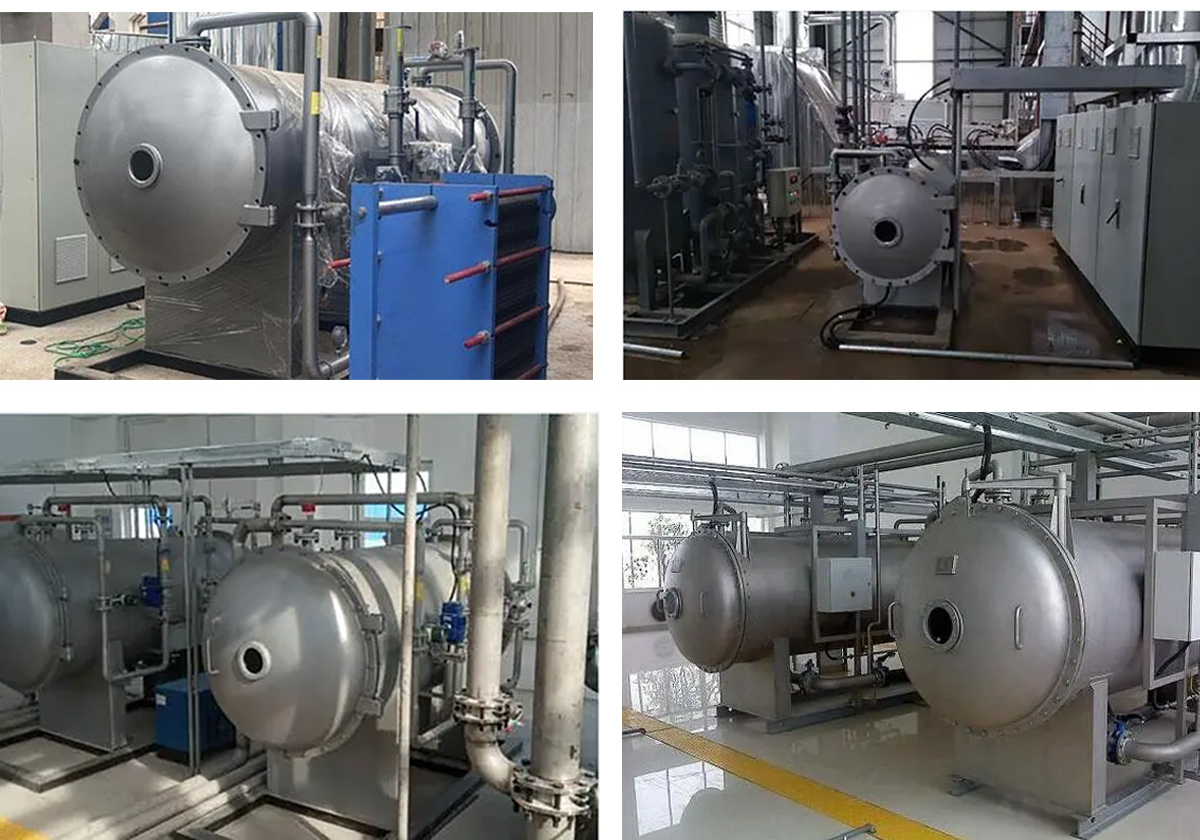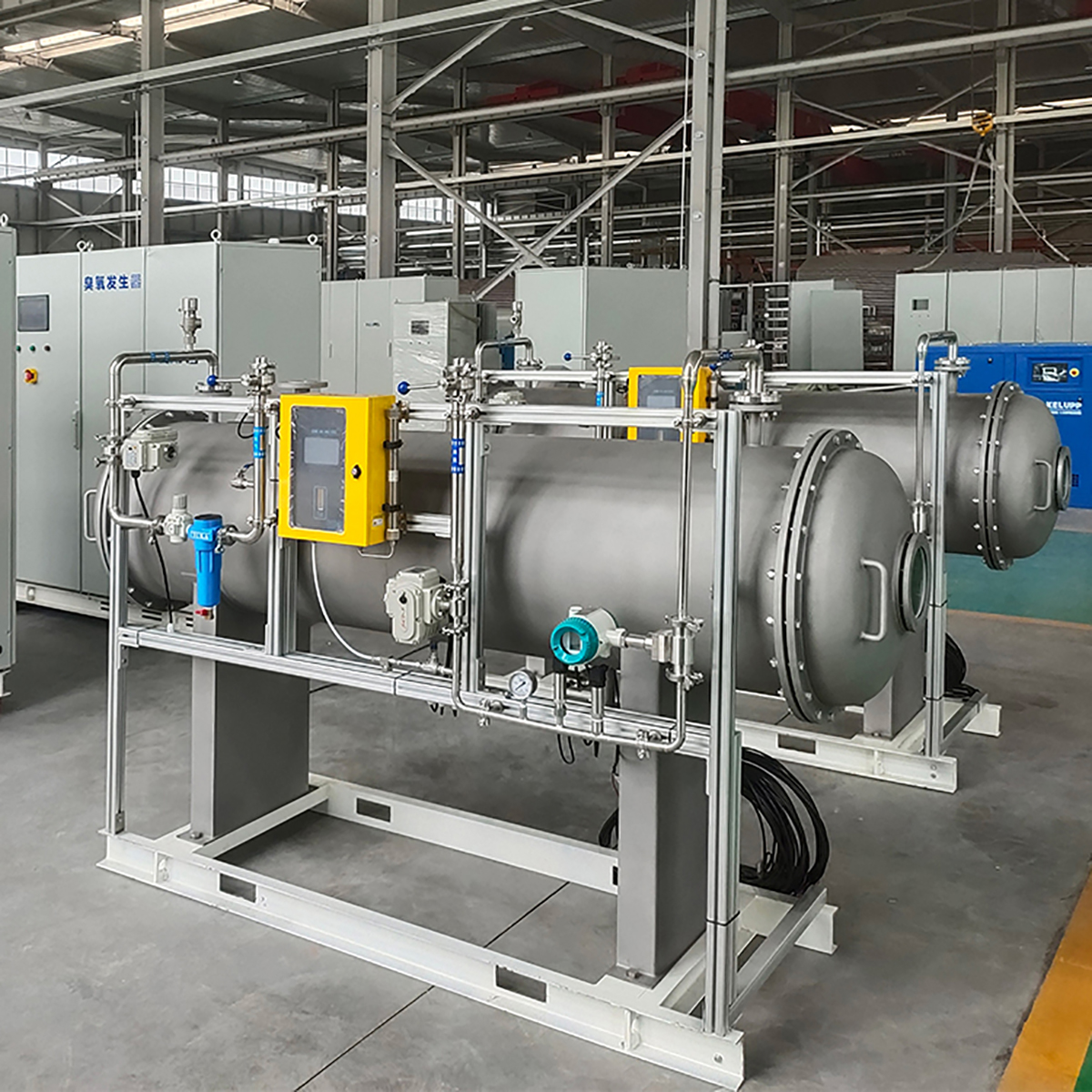Ozone Generator for Waste Water Treatment & Dyes Removal
Many wastewater Treatment Plants are gradually substituting chlorine with ozone. Ozone is a powerful oxidizing agent and safer in use in comparison with other oxidizing agents. Ozone is generated on site by ozonator, Environwateros ozone systems and engineering has designed ozonator specially for ETP, STP and dye removal from textile and dye industries.Environwateros Ozonator is water cooled to produce high concentrated ozone to meet this special application. Ozone is a highly reactive form of oxygen, capable of converting organic molecules to water and carbon dioxide. This is called mineralization. Ozone will also react with heavy metals such as iron, and manganese to form precipitates which are easily filterableMoreover, under certain operating conditions ozone can be converted to hydroxyl radicals which are even more powerful oxidisers than ozone itself. Processes in which ozone is converted to hydroxyl radicals to achieve higher reaction rates are known as advance oxidation process.

Ozonator for Waste Water & Dye Color Removal
Water is shown colored when visible radiation is absorbed from dissolved materials, or when light is reflected on suspended solids. These two sources of color are the base for the distinction between the pseudo and true color. The pseudo color is due to absorption as well as light reflection. The true color depends exclusively from the kind and quantity of the dissolved substances. Particles with a size of 400-800 nm, that means within the wavelength of visible light, are responsible for light reflection. It is possible with filtering (membrane 0.45 μm) the phenomenon of reflection to be eliminated. It must also be noted that the difference between the pseudo and true color is related to water’s turbidity.The units Pt–Co (USA), or mg Pt-Co / l (Europe) are defined as color measurement units. These units are considered equivalent. The acceptable limits of color values for the disposal of treated wastewater ranges from 50-100 units Pt-Co, depending on the nature of the receiver (river, sea, lake etc).True color is created by the presence of compounds that absorb visible light in wavelengths of 400-800 nm, or from compounds that fluoresce in the 200-400 nm spectrum. These are compounds of poly-aromatic structure, substituted aromatic structure, polyenia, concentrated hetero-circular molecules or perplex ions. It should be noted that π bonds absorb into the UV (‹200nm ) spectrum and the existence of conjugate bonds (polyenia) is necessary for the absorption in visible light spectrum. Most compounds responsible for color creation contain one or more aromatic rings and start absorbing color at 250 nm.The synthetic color carriers come mainly from industrial plants as dye-houses, clothing industries with washing-machines, food and beverage industries, slaughterhouses etc.Wastewater is processed with ozone after its exit from the chemical or/and biological treatment plant and the usual dosage varies from 50-150 mg/l, according to the wastewater origin, its temperature, and the degree of its previous process.Ozone-wastewater contact system:The contact system consists of a three-chamber tank, height of 4.5-5 meters with inside splits that guide the wastewater to a vertical labyrinthine flow. Ozone is supplied to the tanks through diffusers made of a special porous material of high resistance. These diffusers have the ability to create multi-numbered and very thin ozone bubbles, with a diameter of 220μm. With their appropriate geometric installation in the bottom of the contact tank, better distribution but also increase in the liquid-gas contact surface to its maximum, is achieved.The diffuser is used due to the high rate of transport (70%) and its trivial energy consumption. In a tank of three-chambers, diffusers are installed in depth of 5 meters and succeed a transport rate more than 75%. The wastewater must have a hydraulic retention time greater than 45 minutes.Ozonator Color Removal Quality:The quality of the ozone treatment effluent in terms of color removal, depends on following factors,
The ozone doseage and ozone concentration
the colour value of feed effluent
the wastewater type (Typically color values do not decrease below 200 Pt-Co units even if an especially high ozone dosage is applied)
the wastewater temperature (better results with effluent from the existing treatment whose temperature is much lower than the temperature of wastewater from the equalization tank)
the values of the other wastewater characteristics that ozone also affects (better results if BOD, COD and SS have already been decreased in a previous treatment level)

The best results concerning color removal are achieved if the wastewater has been previously treated in order to lower the values of the other characteristics so that the ozone oxidizing effect is “consumed” only or at least at a maximum proportion in color removal. Additionally the temperature must be below 30-deg C in order to achieve the best physical conditions for its solubility.The above remark certainly concerns the practical usage of ozone technology in wastewater treatment, as it indicates that the increase of the ozone dosage could give good results even in unprocessed wastewater as long as it has been efficiently cooled.The same effluent quality, the investment of an ozone installation can be paid off in 3-5 years, depending on the size and other specific details of each case Wastewater color removal requires an ozone dosage which in most cases fluctuates from 50 to 100 mg/l, for color reduction of 85-92%. This dosage succeeds simultaneously a COD reduction about 40%, while small increases of BOD in the area of 3-7% have been noticed
The ozone treatment installation represent a significant construction and purchase cost. On the other hand a conventional treatment scheme using chemical coagulants for color removal, has high operational costs (cost of the coagulants themselves and cost for the produced sludge management requirements). In general and for the same effluent quality, the investment of an ozone installation can be paid off in 3-5 years, depending on the size and other specific details of each case.

